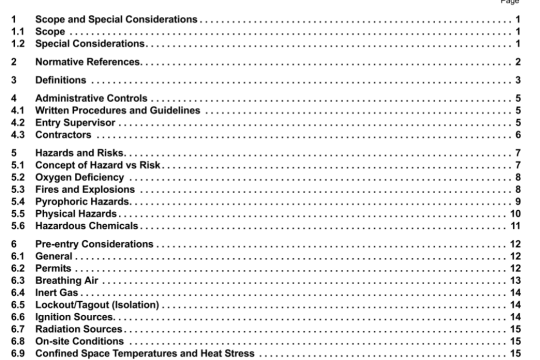API St 2560:2010 pdf download
API St 2560:2010 pdf download.Reconciliation of Liquid Pipeline Quantities.
6.7.5 Sometimes it is helpful to know how much two variables interact with each other. One variable is the “independent variable” and the other is the “dependent variable”. The value of the dependent variable depends on the value of the independent variable In other words the dependent variable will change every time the independent variable changes. If the dependent variable is changed by some other influence, the independent variable will not change as a result. For example. a meter 1ictor can be changed by changing flow rate, but flow rate cannot be changed by changing meter factor.
6.7.6 The relationship between two variables is called the “correlation” and may be “strong”, in which case the dependent variable changes in a very predictable manner with changes in the independent variable, or may be “weak”, in which case the dependent variable tends to change with the independent variable but the amount of change is not predictable.
6.7.7 The strength of the correlation can be measured statistically with the “correlation coefficient”: The procedure for calculating the correlation coefficient is shown in Appendix A.
6.7.8 It should be noted that even though a strong correlation exists, lithe slope of the associated regression line is very flat the correlation is relatively insignificant.
6.8 CUMULATIVE CHARTS
6.8.1 Cumulative charts are similar to trending charts but plot the cumulative values of some variable such as, LIG vs. time. The cumulative value is obtained by arithmetically (i.e., keeping the plus and minus signs) adding the value of each data point to the sum of all the data points preceding it in a sequence of data.
6.8.2 The data in cumulative charts do not hover around a central mean value. They exhibit an upward or downward trend. The shape of the curve is the main characteristic of cumulative charts, and changes in shape or general trend are very important.
6.8.3 UG data may be plotted as cumulative barrels or cumulative percent. Examples are shown on Figure II. In these examples. the quantities are measured in barrels, but other volume or mass quantities may be used as appropriate.
6.8.4 Cumulative UG charts can be informative to the practiced eye. They often indicate the onset of a trend before it is evident on a conventional control chart. A system which is performing normally will generally exhibit a steady trend. A sudden shift in the pattern or a definite change in the rate of trend (change in general slope of the data) usually indicates that something abnormal happened.
7.1 THE TROUBLESHOOTING PROCESS REFERENCE APPENDIX B
Investigating pipeline losses can often he challenging ii 1101 frustrating. It is not uncommon for the process to take as long to resolve as it does for losses to appear. With a keen eye for detail some losses can be resolved in minutes, whereas some may take weeks, months, or even longer.
7.1.1 Analyzing measurement data
The fIrst step in identifying losses involves a review of the measurement data. A loss/gain report is usually the red flag that signals that a system is out of control. Start by carefully reviewing the report and insure that input data were accurate and timely. Computer generated reports are only as good as the data entered. It is important to first understand the data entry process and then the integrity of the data used to populate the report.
7.1.2 Looking for the Obvious
Custody measurement records such as tickets, proving reports. and meter performance logs can be obtained and reviewed from the office environment. Reviewing measurement calculations are an easy way to check for measurement error. Often, human error, equipment failure, or software glitches can quickly be identified.
Reviewing records and historical data is of key importance. Look for patterns, often hidden among the noise caused by large month-to-month variations. Are step changes linked to operational changes at the facility? There are many possible operational changes that can affect reported losses. Areas of change to investigate are.




